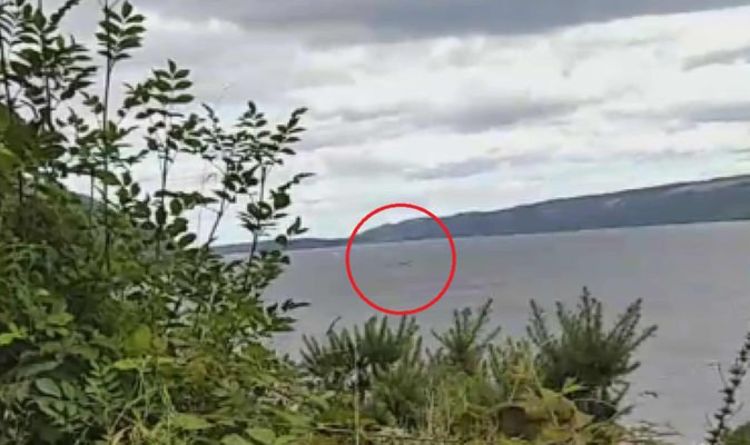So far through 2019, there have been 16 sightings of the loch’s mythical monster – the highest number of annual sightings for 36 years. The most recent sighting comes from Eoin O’Faodhagain, from Co Donegal, Republic of Ireland, and experienced Nessie hunter. Mr O’Faodhagain believes he saw a 20-25 foot Nessie popping three feet out of the water as it swam in Loch Ness.
The veteran monster hunter, who believes he has seen the beast four times year, said: “It’s hard to believe I am the 16th sighting, and my fourth for the year. I suppose when you sit down and think about it, it’s hard to grasp the achievement, while other people have never got their first sighting.
“Something black pops up at intervals of four to five seconds on video covering a distance of about 20-25 feet at each interval.
“It’s too hard to calculate the size of the object, but I would say it pops up at least three feet high out of water.”
Earlier this month, scientists from New Zealand extracted DNA samples from across Loch Ness, and found no dinosaur-DNA. The mythical monster had been rumoured to be a plesiosaur, a dinosaur which lived up until the end of the dinosaurs’ time on Earth 66 million years ago.
The team also managed to rule out the presence of giant crocodiles, sturgeon, otters and seals.
However, Dr Neil Gemmell, from the University of Otago, said he was “surprised” by the “sheer volume” of eel DNA.
Dr Gemmell said divers saw massive eels in the loch, which he theorises could have been mistaken for a massive monster.
Juvenile eels, known as elvers, make their way to Scottish rivers from the Sargasso Sea near the Bahamas, a gruelling 3,100 mile (5,000 km) journey, each year to lay eggs.
Dr Gemmell said that while isolated in the loch, the eels could have grown “even larger”.
He continued: “People love a mystery, we’ve used science to add another chapter to Loch Ness’ mystique.
“We can’t find any evidence of a creature that’s remotely related to that in our environmental-DNA sequence data. So, sorry, I don’t think the plesiosaur idea holds up based on the data that we have obtained.
“So there’s no shark DNA in Loch Ness based on our sampling. There is also no catfish DNA in Loch Ness based on our sampling. We can’t find any evidence of sturgeon either.
DON’T MISS
WATCH: Shocking video of China’s Loch Ness Monster [VIDEO]
Bigfoot FBI investigation documents REVEALED [ANALYSIS]
Has THIS legendary monster been FOUND? Mysterious creature spotted [STUDY]
“There is a very significant amount of eel DNA. Eels are very plentiful in Loch Ness, with eel DNA found at pretty much every location sampled – there are a lot of them. So – are they giant eels?
“Well, our data doesn’t reveal their size, but the sheer quantity of the material says that we can’t discount the possibility that there may be giant eels in Loch Ness.
“Therefore we can’t discount the possibility that what people see and believe is the Loch Ness Monster might be a giant eel.”
Source: Read Full Article




